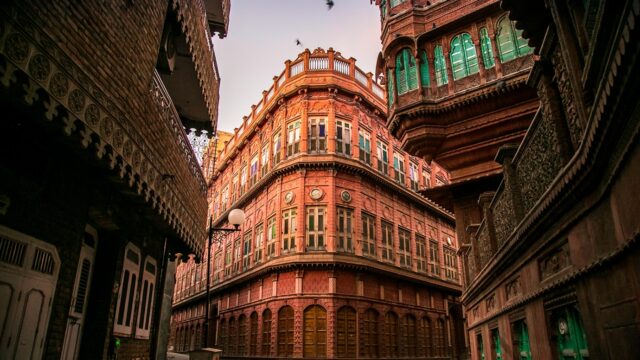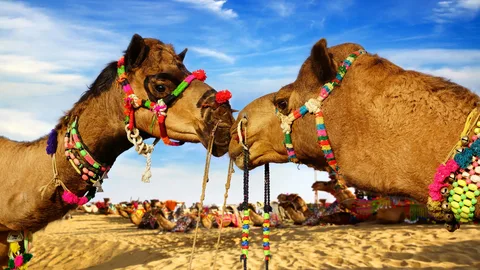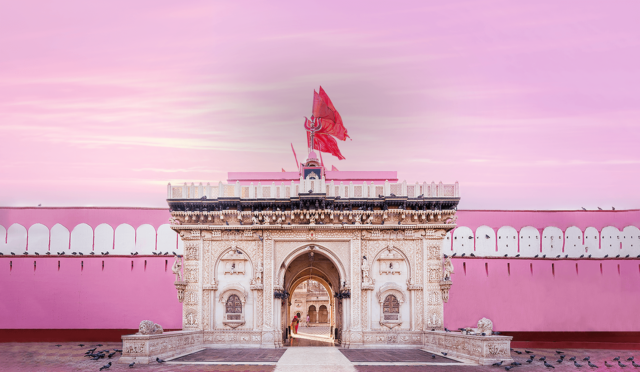Bikaner Tour Itinerary
Itinerary Details:
Day 01: Arrival Bikaner – Hotel – Bikaner Local Sightseeing
Meet and Greet by our executives at your disposal. Transfer to Ramthambore check-in to hotel. After fresh-up start to visit > Junagarh Fort in Bikaner. Important sights to see in fort are Anup Mahal, Sheesh Mahal, Rampuriya Haveli
NRCC ( National Research Centre On Camel )
National Research Centre on Camel was established on 5th July 1984 by the Central Government under Indian Council of Agricultural Research at the outskirts of Bikaner city to promote research and development on camels. It is located about 8 km from Bikaner city in the state of Rajasthan in India. Mandates of this institute are.
- Basic and applied research for improvement camel health and production.
- Information repository on camel research and development.
- Development of camel eco-tourism. Back to hotel overnight stay at Bikaner.
Day 02: Karni Mata Temple – Railway Station Drop
After breakfast check-out from the hotel start to visit karni mata temple.
Karni Mata Temple
The temple is famous for the approximately 25,000 black rats and a few white rats (which are rarest to be seen) that live, and are revered, in the temple. These holy rats are considered as Depawat Charanas in previous birth, these both take birth in a cycle of humans and mice respectively. Many people travel great distances to pay their respects. The temple draws visitors from across the country for blessings, as well as curious tourists from around the world and drop at Bikaner railway station for onword journey.
Tour ends with sweet memories at Bikaner:
*If you want to customize to your own preferences feel free to call as well

Rampuriya Haveli
Rampuriya Haveli is a historic mansion located in the town of Jaisalmer, in the Indian state of Rajasthan. The haveli was built in the late 18th century by a wealthy merchant family, and it is known for its stunning architecture and intricate carvings.
The haveli is a prime example of the traditional Rajasthani architecture, featuring ornate facades, beautiful balconies, and stunning courtyards. The haveli has been beautifully restored and is now open to the public as a museum, showcasing the lifestyle and culture of the wealthy merchant families of Jaisalmer in the past.

Camel Research
Camel research can also be related to tourism, as camels are a popular attraction for many travelers. Some areas of camel research related to tourism include:
- Camel training and behavior: Understanding how camels behave and how to train them can help ensure the safety and comfort of tourists who ride them. Research on camel behavior and training can also help prevent mistreatment of camels by their handlers.
- Camel health and welfare: Camels can be prone to various health problems, especially when used for long-distance travel or work. Research on camel health can help identify ways to improve their welfare and prevent illness or injury.
- Cultural significance: In many parts of the world, camels have cultural and historical significance. Research on the cultural significance of camels can help inform tourism experiences and promote cultural understanding.
- Ecotourism: Camels are often used for eco-tourism experiences in desert regions. Research on the impact of eco-tourism on camel populations and the environment can help inform sustainable tourism practices.
Overall, camel research related to tourism can help improve the welfare of camels, promote cultural understanding, and inform sustainable tourism practices.

Karni Mata Temple(Deshnok)
Karni Mata Temple is a famous Hindu temple located in Deshnok, a small town in the Bikaner district of Rajasthan, India. It is also known as the Temple of Rats, as it is home to thousands of black rats that are considered sacred by the temple’s devotees.
The temple is dedicated to Karni Mata, a female Hindu mystic who is believed to have lived in the 14th century. According to legend, Karni Mata was a miracle worker who possessed supernatural powers and was revered as an incarnation of the goddess Durga. After her death, she was worshipped as a deity, and her followers believed that her spirit had reincarnated in the form of black rats.
The temple complex is spread over several courtyards and is made of marble and stone. The main entrance of the temple is a magnificent gate made of silver that was donated by a wealthy merchant in the early 20th century. Inside the temple, visitors can see the rats running around freely, and feeding them is considered a sacred act.


